During World War II, several iconic battleships proved their importance, such as the Bismarck, HMS Hood (51), Yamato, Roma (1940) and USS Iowa (BB-61). However, this era also signified the declining dominance of battleships, shown by the cancellation of numerous battleship projects during the war.
In World War I, battleships proved their might in battles like Dogger Bank and Jutland, highlighting their strategic significance and prompting countries to build more advanced capital ships. For example, the United States passed the Naval Act of 1916, also known as the Big Navy Act, to strengthen the US Navy.
This act authorized the construction of 10 battleships, six battlecruisers, 10 scout cruisers, 50 destroyers, and 67 submarines. Despite plans to begin in 1919 and complete within four years, the proposed fleet never came to fruition.
This story mirrors the fate of many abandoned battleship projects during World War II.
Washington Naval Treaty
The Washington Naval Treaty aimed to prevent a naval arms race by setting limits on naval construction. Negotiated during the Washington Naval Conference from November 1921 to February 1922, the treaty was signed by the United Kingdom, US, France, Italy, and Japan.
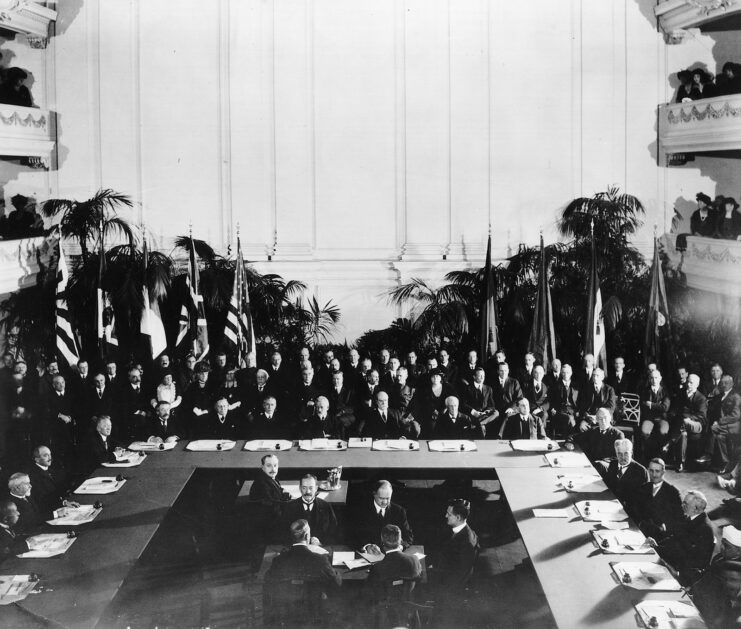
It established specific tonnage allowances for battleships and aircraft carriers for each nation. The United States, for instance, could build battleships up to a total tonnage of 525,000. Additionally, the treaty stipulated that no single battleship could exceed 35,000 tons or mount guns larger than 16 inches in caliber.
These restrictions applied to both future constructions and vessels currently under construction, leading to the scrapping or conversion of ships from all five nations in accordance with the treaty’s terms.
Lexington-class battlecruisers
The Naval Act of 1916 introduced the Lexington-class, intended to be the only battlecruiser in the US Navy’s fleet. Initially, six ships were planned for construction starting in 1921. However, treaty obligations led to the cancellation of the last four, which were still in their early stages, while the first two were converted into the aircraft carriers USS Lexington (CV-2) and Saratoga (CV-3).
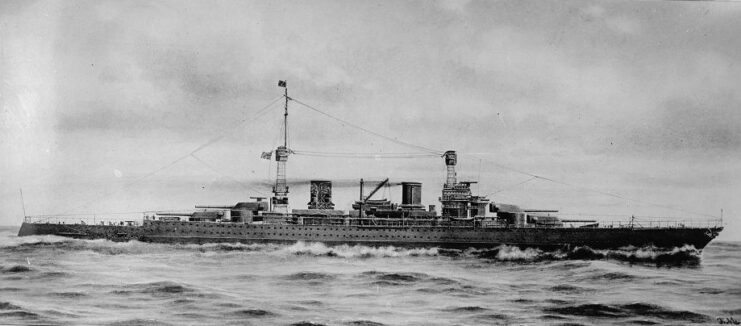
Originally, the Lexington-class battlecruisers were equipped with ten 14-inch and eighteen 5-inch guns, capable of reaching a top speed of 40 MPH. Subsequent modifications reduced the armament to eight 16-inch and sixteen 6-inch guns, with a slightly lower top speed of 38.26 MPH. These changes aimed to enhance firepower while adding more armor, though this came at the cost of speed.
Both Lexington and Saratoga served in World War II
Other armaments were to be eight 3-inch Mk 11 anti-aircraft guns and eight 21-inch torpedo tubes. The Lexington-class would also be powered by a turbo-electric propulsion system, first adopted by the USS New Mexico (BB-40).
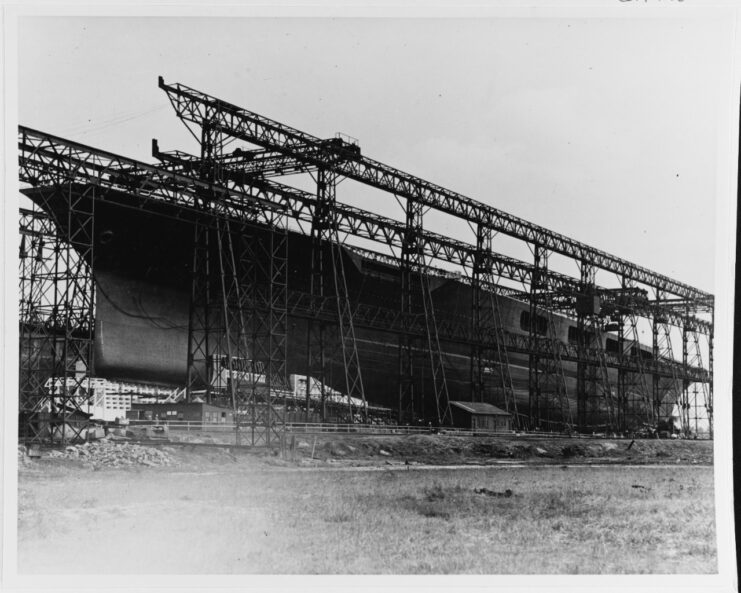
Despite their almost-uncertain futures, Lexington and Saratoga both went on to serve during the Second World War. The former was sunk during the Battle of the Coral Sea. The latter survived, despite being torpedoed twice, and was used as a target during Operation Crossroads.
South Dakota-class battleships
The South Dakota-class battleships were designed to compete with their British and Japanese counterparts, which boasted speeds of up to 26.47 MPH. Authorized in 1917, the class was intended to feature six vessels.
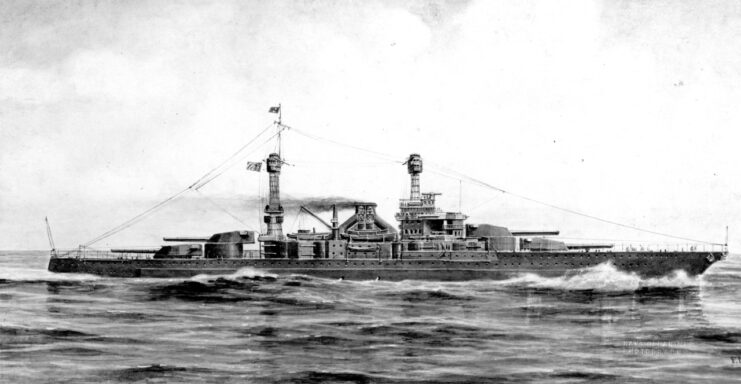
Construction was initially postponed to incorporate improvements following the Battle of Jutland. It was further delayed as destroyers and other ships were seen as more of a priority in combatting German U-boats in the North Atlantic.
Unfinished South Dakota-class ships were scrapped
The South Dakota-class was to be armed with twelve 16-inch guns in four triple-gun turrets, sixteen 6-inch guns, four .50-caliber anti-aircraft guns and two 21-inch torpedo tubes. Propulsion, like the Lexington-class, would be via a turbo-electric system.
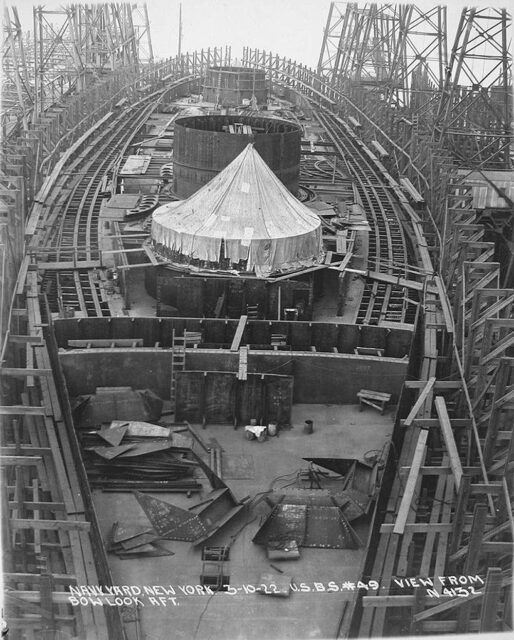
Construction finally started in 1920, but, two years later, with the signing of the Washington Naval Treaty, was brought to a standstill. In 1923, the unfinished ships were scrapped, and their boilers and armor used to improve older vessels. Their guns were given to the US Army.
Montana-class battleships
The intended successor to the Iowa-class, the Montana-class was to be larger, better protected and more powerful than any battleship the US Navy had ever operated. The five-ship class was initially designed before the start of the Second World War. Construction was intended to begin during the conflict, but was canceled.
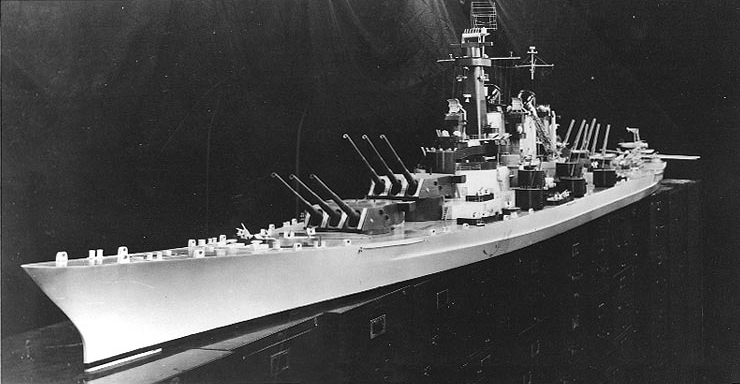
Montana-class battleships would have had twelve 16-inch Mk 7 guns as their main armament, housed in four three-gun turrets – two forward-facing and two rearward-facing. This would allow them to surpass the Imperial Japanese Navy’s (IJN) Yamato as the battleship with the most powerful broadside.
The class would have also carried twenty 5-inch guns in 10 turrets, as well as Bofors 40 mm and Oerlikon 20 mm anti-aircraft guns. The battleships were to be powered by eight boilers and four steam turbines.
The cancelation of the Montana-class was the beginning of the end
The Montana-class would be armored more than any other American battleship of the era. Despite the increase in size, this addition would have protected against vessels with similar-caliber guns, making them the only US ships with this ability.
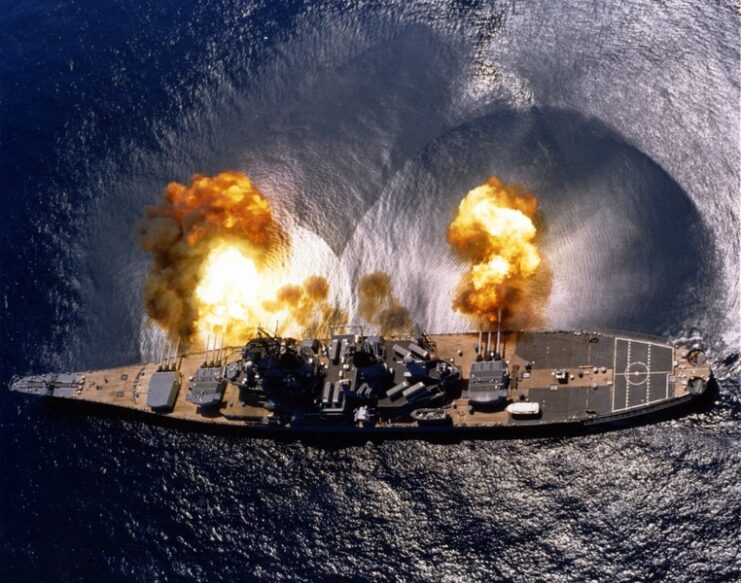
Are you a fan of all things ships and submarines? If so, subscribe to our Daily Warships newsletter!
In May 1942, construction was ordered to begin on the Montana-class. Before anything started, however, the vessels were postponed, in favor of building more Essex-class aircraft carriers and Iowa-class battleships.
In July 1943, the Montana-class was officially canceled. The cancellation of these capital ships signaled the slow decline of the battleship. World War II was to be the final conflict where they played a definitive role. After the Battles of the Coral Sea and Midway, which displayed the importance of airpower and aircraft carriers, the final rivets were put in the battleship’s coffin.
